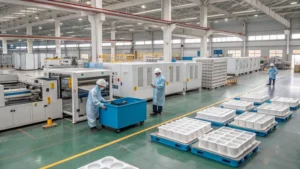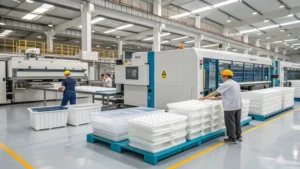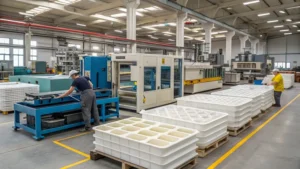
Additives are vital components in the extrusion process, enhancing the properties of extruded products to meet specific industry demands. By modifying characteristics such as strength, flexibility, appearance, and safety, additives ensure that extruded products perform optimally in applications ranging from construction to packaging. This blog explores how additives improve extruded products, providing insights into their definitions, applications, technical processes, and practical considerations.
Additives1 enhance extruded products by improving mechanical properties, appearance, and safety, making them versatile for industries like construction, automotive, and packaging.
Understanding the role of additives is key to optimizing the performance of extruded products. This blog covers the essentials, from basic definitions to advanced technical details, offering a comprehensive guide for readers.
Additives always improve the strength of extruded products.False
While some additives enhance strength, others focus on flexibility, appearance, or other properties.
Additives are only used in plastic extrusion.False
Additives are applied across various materials, including metals and food products, to improve their properties.
- 1. What Are Additives in Extruded Products?
- 2. How Do Additives Improve the Properties of Extruded Products?
- 3. What Are the Applications of Additives in Extruded Products?
- 4. What Is the Process of Adding Additives in Extrusion?
- 5. What Are the Factors to Consider When Using Additives in Extrusion?
- 6. What Are the Differences Between Various Types of Additives?
- 7. Conclusion
What Are Additives in Extruded Products?
Additives are substances incorporated into the base material during extrusion to enhance or modify its properties. They are critical for tailoring extruded products to specific needs, improving aspects like durability, aesthetics, and functionality.

Additives are substances added to base materials to enhance properties like strength, flexibility, color, and safety in extruded products across multiple industries.
| Additive Type | Primary Effect | Typical Application |
|---|---|---|
| Plasticizers | Increases flexibility | Flexible PVC pipes, cables |
| Stabilizers | Prevents degradation | Outdoor plastic profiles |
| Fillers | Enhances strength, reduces cost | Construction materials |
| Colorants | Improves appearance | Decorative profiles, packaging |
| Lubricants | Eases processing | Metal extrusion, plastics |
| Antioxidants | Extends lifespan | Long-term use products |
| Flame Retardants | Enhances safety | Electrical components |
Plasticizers
Plasticizers2 increase the flexibility and workability of materials, especially plastics like PVC. They are widely used in products such as flexible pipes and cables, allowing for greater adaptability in design and use.

Stabilizers
Stabilizers3 protect materials from degradation caused by environmental factors like UV light and heat. They are essential for outdoor extruded products, such as plastic profiles, ensuring durability over time.
Fillers
Fillers improve mechanical strength or reduce production costs by substituting more expensive base materials. Commonly used in construction, they enhance the structural integrity of extruded products.
Additives can reduce the cost of extruded products.True
Fillers, for instance, lower costs by replacing costly base materials while maintaining performance.
All additives improve the mechanical properties of extruded products.False
Some additives, like colorants, primarily enhance appearance rather than mechanical attributes.
How Do Additives Improve the Properties of Extruded Products?
Additives enhance extruded products by altering the base material’s characteristics to meet specific requirements. They improve mechanical properties, aesthetics, and safety, making products more suitable for their intended uses.

Additives enhance extruded products by improving mechanical properties, appearance, and safety, tailoring them for diverse applications across industries.
Mechanical Properties
Additives like fillers boost strength, while plasticizers enhance flexibility. This allows manufacturers to fine-tune extruded products for specific mechanical demands, such as rigid construction components or flexible packaging films.
Appearance
Colorants add vibrant hues, and stabilizers maintain visual appeal by preventing discoloration. These additives are crucial for products where aesthetics matter, such as decorative profiles or consumer packaging.
Safety and Health
Flame retardants reduce fire risks, and antioxidants extend product lifespan by preventing oxidative damage. These additives are vital for safety-critical applications, like electrical components and long-term use items.
Additives can make extruded products safer for use.True
Flame retardants, for example, reduce flammability, enhancing safety in applications like electrical wiring.
Additives always increase the cost of extruded products.False
While some additives raise costs, others like fillers reduce expenses by minimizing the use of expensive materials.
What Are the Applications of Additives in Extruded Products?
Additives enable extruded products to serve a wide range of industries by enhancing properties tailored to specific needs. Their versatility drives innovation and efficiency in manufacturing.
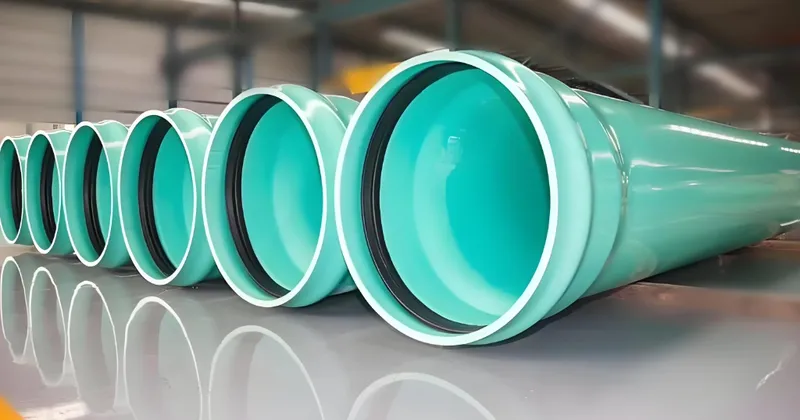
Additives are crucial in industries like construction, automotive, packaging, and food production, enhancing durability, appearance, and safety.
Construction
UV stabilizers and fillers are used in extruded products like pipes and profiles to ensure durability and resistance to weathering, making them ideal for outdoor construction applications.
Automotive
Additives improve the flexibility and strength of extruded automotive components, such as seals and gaskets, meeting rigorous performance standards in vehicles.
Packaging
Colorants and antioxidants enhance the appearance and shelf life of extruded packaging materials, such as films and containers, ensuring product appeal and protection.
Additives are essential for outdoor applications.True
Stabilizers protect against UV degradation, making extruded products suitable for outdoor use.
Additives are only used in plastic extrusion.False
Additives also enhance metal and food extrusion products, broadening their applicability.
What Is the Process of Adding Additives in Extrusion?
Incorporating additives into the extrusion process requires careful steps to ensure uniform distribution and optimal performance. This process is fundamental to achieving consistent product quality.

The process involves selecting additives, mixing them with the base material, and extruding the mixture under controlled conditions to achieve desired properties.
Material Selection
Choosing additives based on the desired properties and application is the first step. Compatibility with the base material and performance goals guide this decision.

Mixing
Additives are blended with the base material, often using specialized equipment like blenders, to ensure a homogeneous mixture before extrusion.
Extrusion
The mixture is melted and forced through a die in an extruder. Temperature and pressure are controlled to optimize additive performance and achieve the desired product shape.
Uniform distribution of additives is crucial for product quality.True
Uneven distribution can lead to inconsistent properties and reduced performance.
All additives are added in the same way during extrusion.False
Different additives may require specific mixing or processing techniques for optimal results.
What Are the Factors to Consider When Using Additives in Extrusion?
Several factors influence the effectiveness of additives in extrusion, impacting the final product’s quality and performance. Careful consideration ensures successful outcomes.
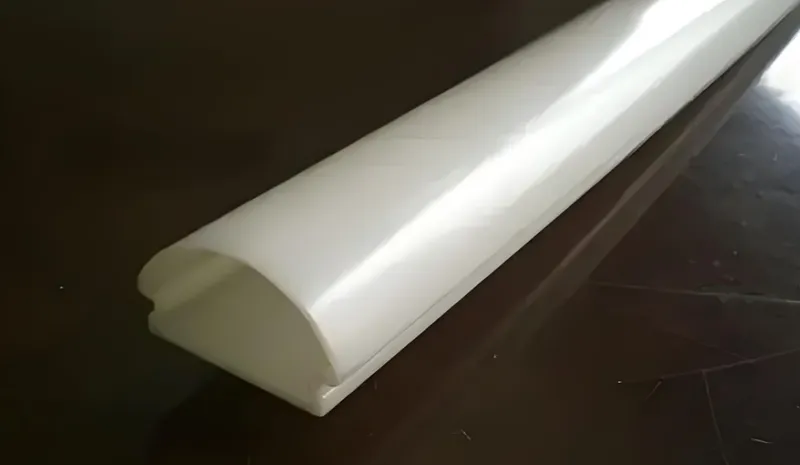
Key factors include compatibility4, processing conditions5, and the type and amount of additives6, all of which affect the extruded product’s properties.
Compatibility
Additives must be compatible with the base material to prevent adverse reactions that could compromise quality, such as phase separation.
Processing Conditions
Temperature, pressure, and screw speed must be optimized to maximize additive effectiveness and achieve consistent results during extrusion.
Type and Amount of Additives
Selecting the appropriate type and dosage of additives is critical to balance desired properties without negatively affecting other characteristics.
Compatibility between additives and base materials is critical.True
Incompatible additives can degrade performance or cause manufacturing issues.
More additives always lead to better properties.False
Excessive additives can harm properties like strength or increase costs unnecessarily.
What Are the Differences Between Various Types of Additives?
Additives vary in their functions, each designed to enhance specific properties of extruded products. Understanding these differences aids in selecting the right additive for the job.
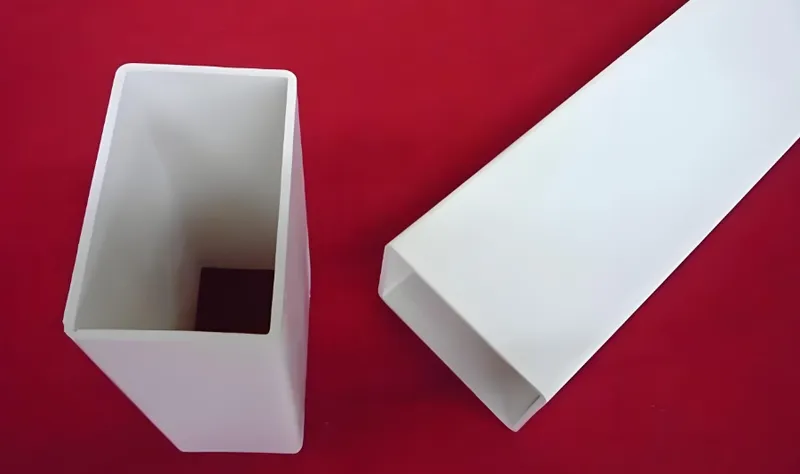
Additives differ in purpose, such as improving flexibility, strength, appearance, or safety, tailored to specific industry requirements.
Plasticizers vs. Stabilizers
Plasticizers enhance flexibility, ideal for bendable products, while stabilizers prevent degradation, ensuring longevity in harsh conditions.
Fillers vs. Colorants
Fillers boost strength or reduce costs, whereas colorants focus on aesthetics, making them suited for visually appealing products.
Plasticizers and stabilizers serve the same purpose.False
Plasticizers increase flexibility, while stabilizers protect against degradation.
Fillers can reduce the cost of extruded products.True
Fillers lower costs by substituting expensive base materials without sacrificing quality.
Conclusion
Additives are indispensable in improving the properties of extruded products, enabling customization for diverse applications. By enhancing mechanical strength, appearance, and safety, they ensure products meet industry-specific needs.
Additives are key to optimizing extruded products, offering solutions for performance, cost-efficiency, and safety across multiple sectors.
Additives are indispensable in modern extrusion processes.True
They allow for tailored properties, making extruded products versatile and effective for various uses.
-
Explore how additives can significantly enhance the performance and versatility of extruded products across various industries. ↩
-
Learn about the role of plasticizers in enhancing flexibility and workability in materials like PVC, crucial for many applications. ↩
-
Discover how stabilizers protect materials from degradation, ensuring durability and longevity in outdoor applications. ↩
-
Understanding compatibility is crucial for ensuring the quality and performance of extruded products. Explore this link for in-depth insights. ↩
-
Processing conditions play a vital role in maximizing additive performance. This resource provides valuable information on optimizing these conditions. ↩
-
Choosing the right type and dosage of additives is essential for product quality. This link offers guidance on making informed decisions. ↩



